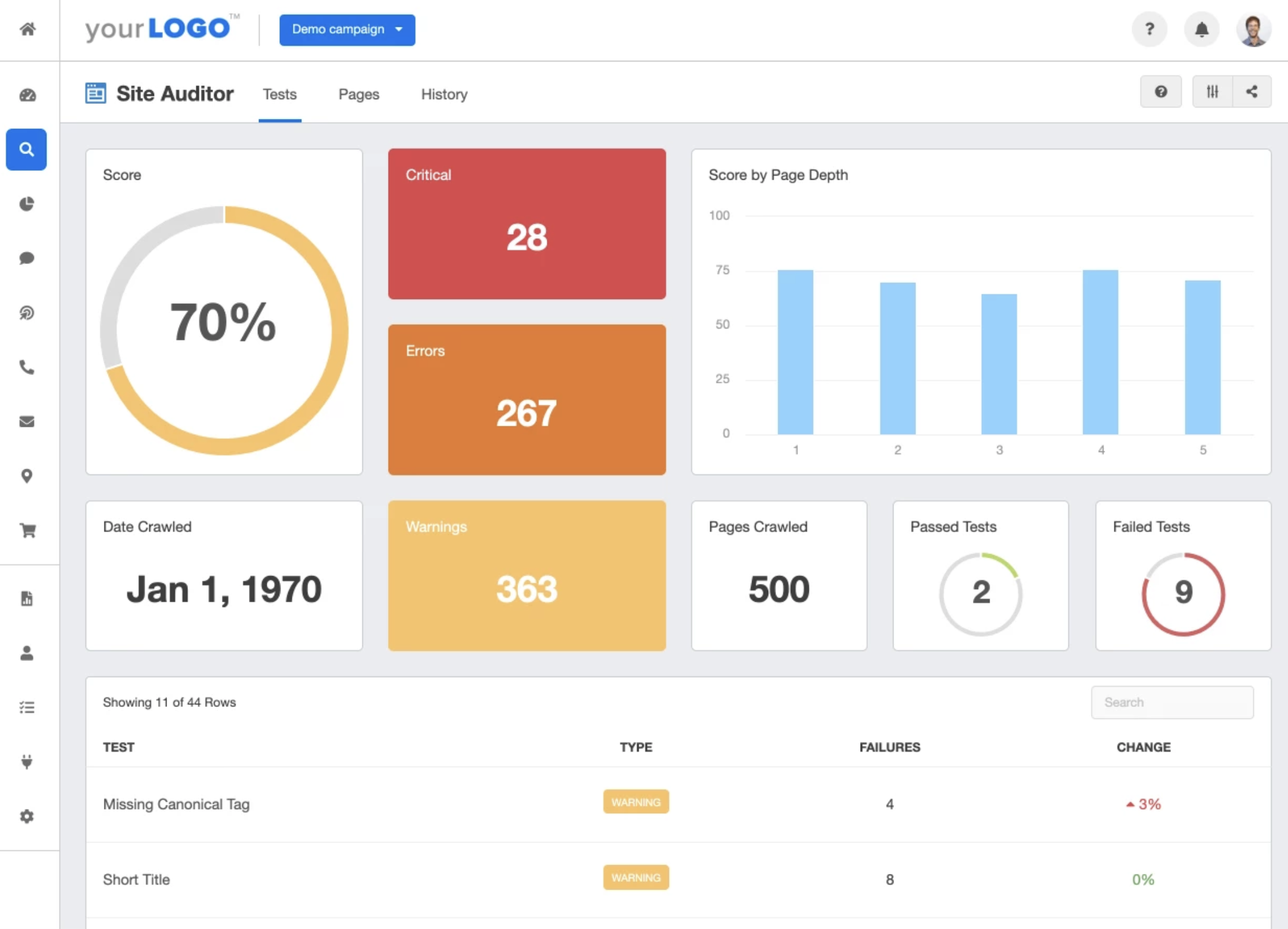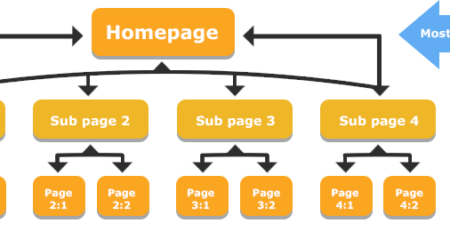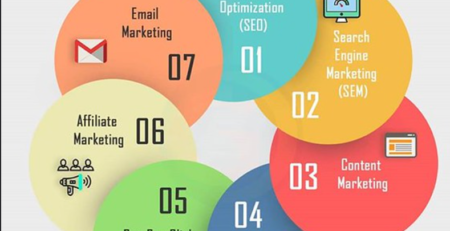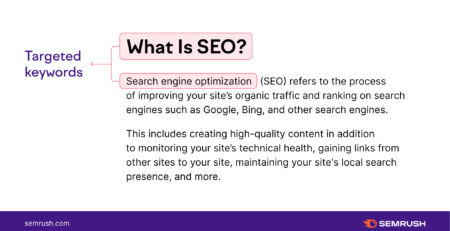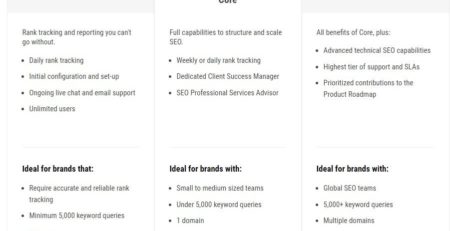How To Create White-label Seo Reports And Automate Them?
Are you interested in learning how to create white-label SEO reports and automate them? Well, you’ve come to the right place! In this article, we’ll dive into the world of search engine optimization and show you how to generate professional reports that impress your clients. But that’s not all – we’ll also teach you how to automate the process, saving you time and effort. So, let’s get started on this exciting SEO journey together!
Now, you might be wondering why white-labeling your SEO reports is important. It’s simple – when you present reports to your clients, you want them to see your brand, not someone else’s. White-labeling allows you to customize the reports with your logo, color scheme, and other branding elements, giving them a personalized touch. Your clients will be impressed by the professional look and feel of the reports, reinforcing their trust in your expertise.
But creating SEO reports manually can be time-consuming and repetitive. That’s why automating the process is a game-changer. By setting up tools and templates, you can streamline the report generation process, saving valuable time that you can spend on other important tasks. Plus, automation ensures consistency and accuracy, reducing the chances of human error. So, if you’re ready to level up your SEO game and become more efficient, stay tuned – we’ve got you covered!
- Choose an SEO reporting tool that offers white-label functionality.
- Set up your account and create a template for your reports.
- Customize the report with your branding, logo, and color scheme.
- Connect your SEO data sources, such as Google Analytics and Search Console.
- Automate the report generation by scheduling regular updates.
Create professional white-label SEO reports and save time by automating the process with these easy steps. Increase client satisfaction and streamline your workflow with accurate and branded reports delivered automatically.
How to Create White-label SEO Reports and Automate Them: A Comprehensive Guide
Are you tired of spending countless hours manually creating SEO reports for your clients? Do you want to streamline your reporting process and provide professional-looking reports that can be easily customized with your own branding? Look no further! In this article, we will guide you through the steps to create white-label SEO reports and automate them using efficient tools and techniques. Say goodbye to the tedious and time-consuming process of manual reporting, and say hello to efficient automation that will impress your clients.
Why White-label SEO Reports Matter
Before we dive into the details of creating white-label SEO reports and automating them, let’s first understand why these reports are essential for your business. White-label SEO reports allow you to present the results of your SEO efforts to your clients in a way that reflects your brand identity. By using your own logo, color scheme, and branding elements, you can establish a professional image and build trust with your clients. These reports provide clear insights into the progress and success of your SEO campaigns, enabling you to showcase the value you bring to your clients’ businesses. Now, let’s explore the steps to create white-label SEO reports and automate them effectively.
Step 1: Choose the Right SEO Reporting Tool
The first step towards creating white-label SEO reports is to choose the right reporting tool. There are several SEO reporting tools available in the market, each offering unique features and functionalities. Consider factors such as ease of use, customization options, data visualization capabilities, and integration with other tools in your SEO toolkit. Look for a tool that allows you to easily add your own branding elements, such as logos, color schemes, and custom headers, to create a cohesive and professional look for your reports. Some popular SEO reporting tools include SEMrush, Moz, and Ahrefs.
Once you have selected the right tool for your needs, familiarize yourself with its features and functionalities. Take advantage of any training resources, tutorials, or support documentation provided by the tool’s developers to ensure you utilize all the available features to their fullest potential. The more comfortable you are with the reporting tool, the more efficiently you can create white-label SEO reports and automate your reporting process.
Step 2: Customize the Report Template
Now that you have chosen an SEO reporting tool that aligns with your requirements, it’s time to customize the report template. Customizing the template involves adding your branding elements, such as your company logo, color scheme, and contact information. This will ensure that every report you generate reflects your brand identity and maintains a consistent look and feel.
Additionally, consider the key metrics and data points that are relevant to your clients and their SEO campaigns. Customize the report template to include these metrics and data visualizations that provide clear and actionable insights. Remember, the purpose of the report is to communicate the value of your SEO efforts to your clients, so tailor the content to address their specific goals and objectives.
Step 3: Automate Data Collection and Reporting
Automation is the key to saving time and streamlining your reporting process. Most SEO reporting tools offer automation capabilities that allow you to set up scheduled reports and automate data collection. Take advantage of these features to automate the repetitive and time-consuming tasks associated with generating SEO reports.
Set up automated data collection by connecting your SEO reporting tool to your preferred analytics platforms, such as Google Analytics or Google Search Console. This will ensure that your reports are always up to date with the latest performance data. Schedule the reports to be generated at regular intervals, such as weekly or monthly, and have them delivered directly to your clients’ inboxes. This will save you valuable time and effort while ensuring your clients receive timely and accurate reports.
Step 4: Add Value with Insights and Recommendations
While automated reports provide valuable performance data, don’t forget to add your insights and recommendations to make the reports more meaningful for your clients. Use the data presented in the reports to analyze the effectiveness of your SEO strategies and identify areas for improvement. Provide actionable recommendations that your clients can implement to enhance their SEO campaigns and achieve better results.
Remember, your expertise and insights are what set you apart from automated reports. By adding value to the automated data, you demonstrate your industry knowledge and position yourself as a trusted SEO advisor. Include explanations of the data and its implications, highlight notable achievements, and outline future strategies to keep your clients engaged and informed.
The Benefits of White-label SEO Reports
White-label SEO reports offer numerous benefits for both SEO agencies and their clients. Let’s take a look at some of these benefits:
- Professional Branding: With white-label reports, you can showcase your brand identity, instilling trust and confidence in your clients.
- Client Transparency: Transparent reporting builds trust and enables clients to understand the impact of your SEO efforts on their business.
- Time Efficiency: Automation saves valuable time, allowing you to focus on high-priority tasks and deliver reports promptly.
- Customization: White-label reports can be tailored to meet the specific needs and goals of each client, ensuring they receive relevant and actionable information.
- Client Satisfaction: Professional-looking, informative reports demonstrate your commitment to your clients’ success, resulting in increased satisfaction and long-term partnerships.
Tips for Creating Effective White-label SEO Reports
To create effective white-label SEO reports that impress your clients, keep the following tips in mind:
- Know Your Audience: Understand your clients’ goals and objectives, and customize the reports to address their specific needs and challenges.
- Highlight Key Metrics: Focus on the metrics that matter most to your clients, such as organic traffic, keyword rankings, and conversions.
- Visualize Data: Incorporate data visualizations, such as graphs and charts, to make the reports more engaging and easy to understand.
- Provide Actionable Recommendations: Offer concrete, actionable recommendations that your clients can implement to improve their SEO performance.
- Keep the Reports Concise: Avoid overwhelming clients with too much information. Keep the reports concise, clear, and to the point.
Incorporating White-label SEO Reports into Your Business Strategy
White-label SEO reports are not just a one-time deliverable; they should be an integral part of your ongoing client communication and business strategy. By consistently providing white-label reports that showcase your clients’ SEO performance, you build trust, demonstrate your expertise, and position yourself as a valuable partner in their success.
Make it a habit to review the reports with your clients, explaining the data, insights, and recommendations in detail. This communication fosters collaboration and allows you to align your SEO strategies with your clients’ evolving goals and objectives. Regularly revisiting the reports also enables you to track the progress of your SEO campaigns and make adjustments as needed.
Remember, white-label SEO reports are a powerful tool for client retention and attracting new business. By investing time and effort into creating professional-looking reports that offer valuable insights and recommendations, you differentiate yourself from competitors and establish yourself as a trusted SEO expert.
Key Takeaways: How to Create White-label SEO Reports and Automate Them
- White-label SEO reports allow you to customize and brand reports with your logo and colors.
- You can create white-label SEO reports by using HTML order snippets.
- Automating SEO reports saves time and ensures consistency in reporting.
- Using H2 headings in the HTML order snippets helps structure the report.
- Keep the language simple and conversational, easily understandable even for a 13-year-old.
Frequently Asked Questions
Welcome to our FAQ section where we’ll answer some common questions about how to create white-label SEO reports and automate them. If you’re interested in optimizing your website’s performance and presenting professional reports to clients, you’re in the right place. Read on to learn more!
1. Why is white-labeling important in SEO reporting?
In the world of SEO, white-labeling is crucial as it allows you to present reports that reflect your brand, rather than showcasing the tools or software you used. By adding your logo, color scheme, and other branding elements, you maintain a consistent and professional image. This can enhance your client relationships and build trust, as well as help you stand out from your competitors.
Additionally, white-label SEO reporting provides a seamless experience for your clients. They will see customized reports that align with their own branding, making it easier for them to understand the data and showcase it to their stakeholders or company executives.
2. What tools can I use to create white-label SEO reports?
There are various tools available in the market for creating white-label SEO reports. Some popular options include SEMrush, Moz, Ahrefs, and Google Data Studio. Each tool comes with its own set of features and customization options, so it’s important to choose one that aligns with your specific reporting needs and budget.
These tools typically allow you to generate comprehensive reports that include data on keyword rankings, backlinks, website traffic, and more. You can customize the design, add your logo and branding elements, and even schedule automated report delivery to your clients. Take some time to explore different tools and find the one that best suits your requirements.
3. How can I automate the process of creating SEO reports?
Automation can save you valuable time and effort when it comes to creating SEO reports. Most white-label reporting tools offer automation features, such as scheduled report generation and delivery. You can set up specific dates and times for your reports to be generated automatically and sent to your clients’ email addresses.
Additionally, you can use APIs (Application Programming Interfaces) to integrate data from various SEO tools directly into your reporting platform. This allows you to fetch data in real-time without manual intervention. By automating the process, you’ll have more time to focus on analyzing the data and providing strategic insights to your clients.
4. How should I structure my white-label SEO reports?
The structure of your white-label SEO reports should be clear, organized, and easy to understand. Start with an executive summary that highlights the key findings and recommendations. This is followed by sections that delve into specific areas such as keyword rankings, organic traffic, backlinks, and on-page optimization.
Include visual elements such as graphs, charts, and tables to make the data more visually appealing and easier to comprehend. Use clear headings and subheadings to break down the report into digestible sections. Additionally, provide explanations and insights where necessary to help your clients understand the implications and action steps based on the data.
5. How can I ensure my white-label SEO reports are accurate?
To ensure the accuracy of your white-label SEO reports, it’s important to rely on reliable data sources and double-check the information before finalizing the report. Make sure you’re using reputable SEO tools and platforms that provide accurate and up-to-date data.
Additionally, regularly audit your reporting process to identify any potential errors or inconsistencies. Conduct quality assurance checks to ensure that the data is being pulled correctly and that the report formatting is accurate. If you’re unsure about any aspect of the data or report, it’s always a good idea to consult with an SEO expert or seek feedback from your peers.
How to Create White Label SEO Audit Reports and Automate Them | #shorts
Summary
Creating white-label SEO reports and automating them can be helpful for businesses. These reports allow you to showcase your SEO efforts to clients and save time by automating the process. By following a few simple steps, you can create professional-looking reports that highlight your SEO achievements and provide valuable insights to your clients.
Automation tools like Google Data Studio, SEMrush, and Moz can be used to gather data and create visually appealing reports. Customizing these reports with your branding and client-specific information adds a professional touch. Regularly updating and reviewing these reports ensures that your clients stay informed about the progress of their SEO campaigns. By automating the reporting process, you can save time and focus on delivering great SEO results.


